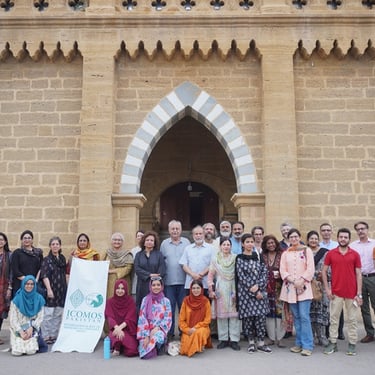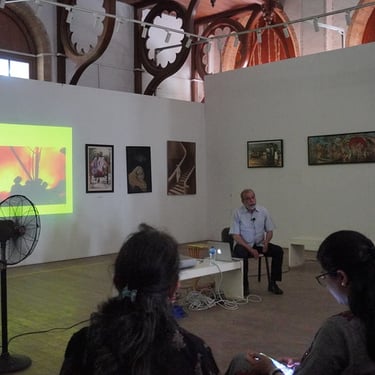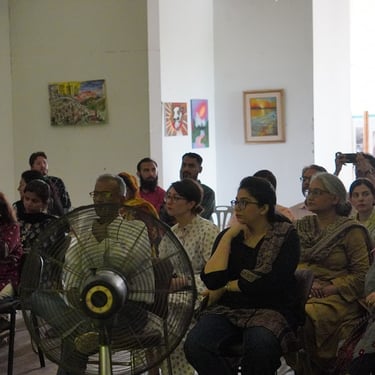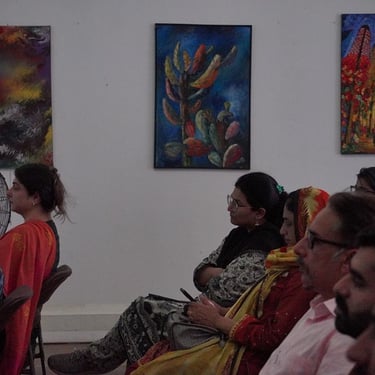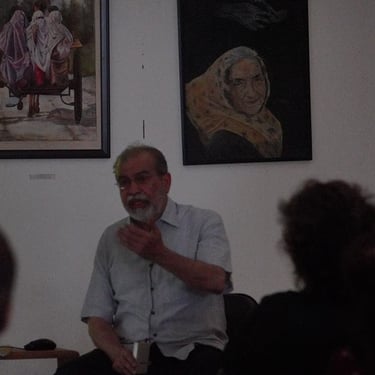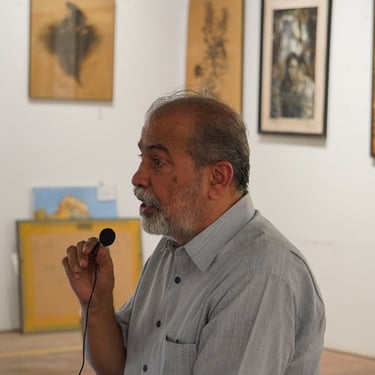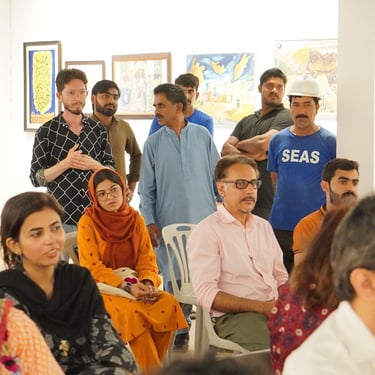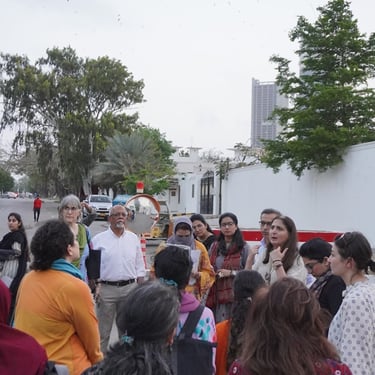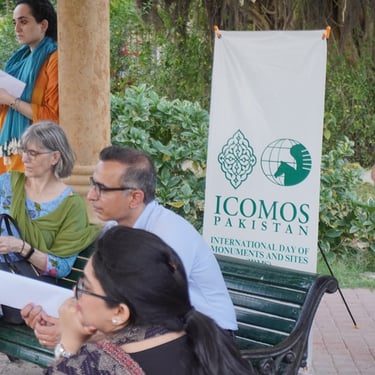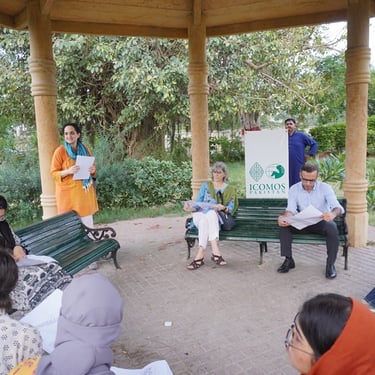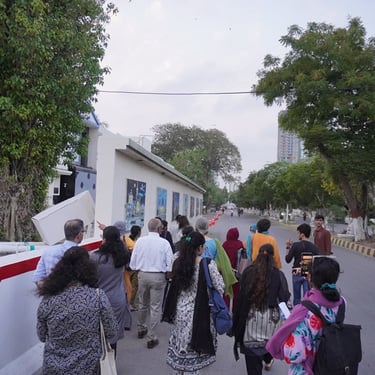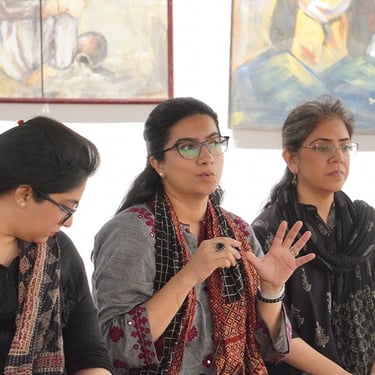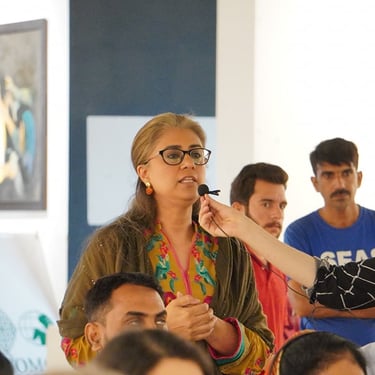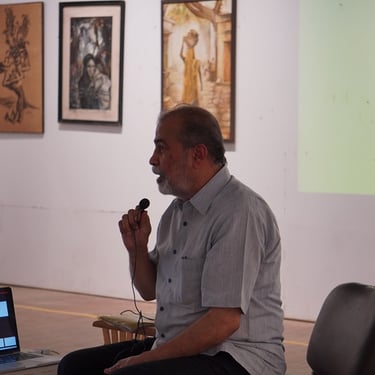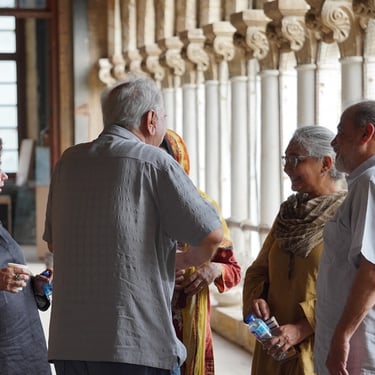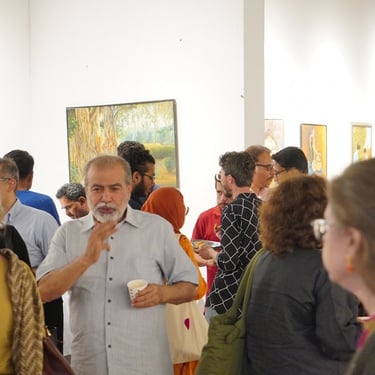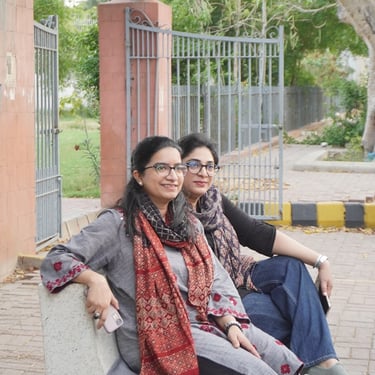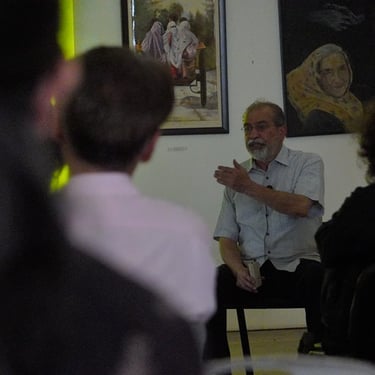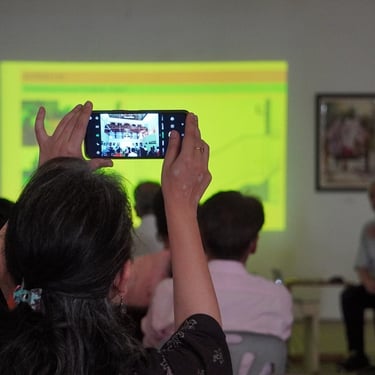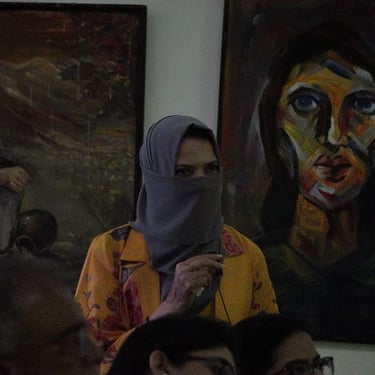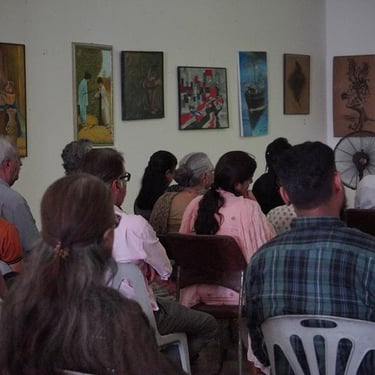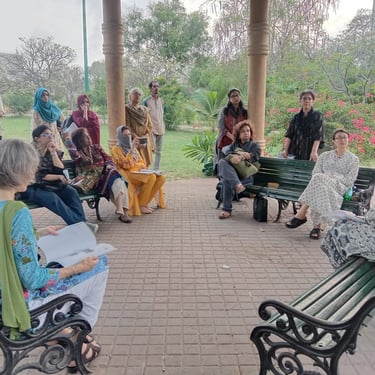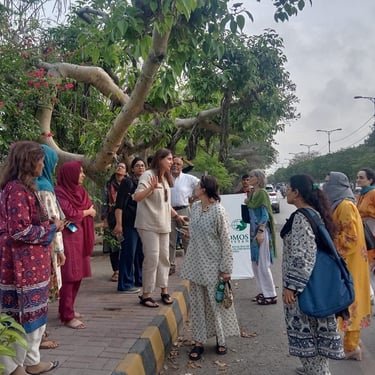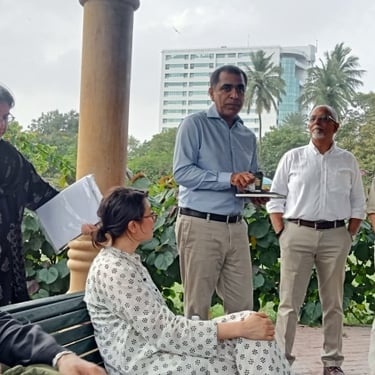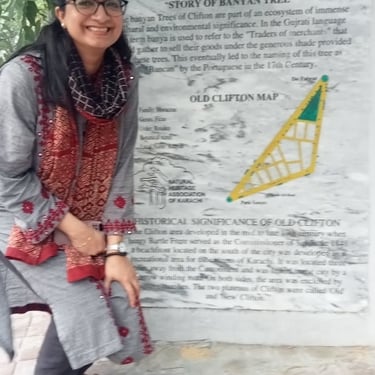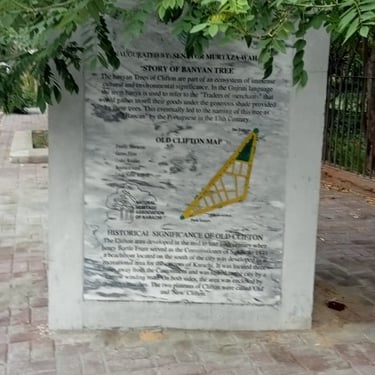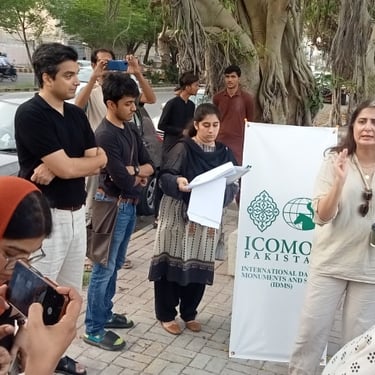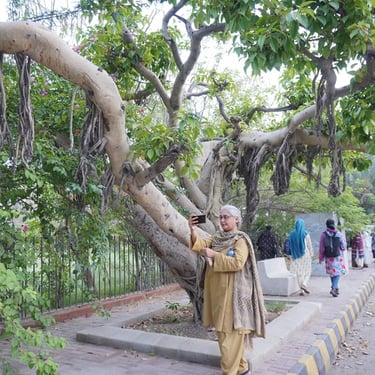International Day of Monuments and Sites 2024
ICOMOS Pakistan celebrated the International Day of Monuments and Sites with a guided tour in Karachi. This year’s theme was “Disaster and Conflict through the Lens of the Venice Charter.” Members in Karachi were invited to join the event on Thursday, 18th April 2024, with a registration fee of Rs. 500/-. As part of the celebration, ICOMOS Pakistan organized a series of talks and created an open forum for dialogue, allowing members to engage with Karachi’s rich cultural and natural heritage. We extend our heartfelt thanks to Dr. Kaleemullah Lashari for his insightful lecture on the conservation of Frere Hall, and to Marvi Mazhar for her engaging talk on the campaign to safeguard the city’s historic Banyan trees.
4/18/20245 min read
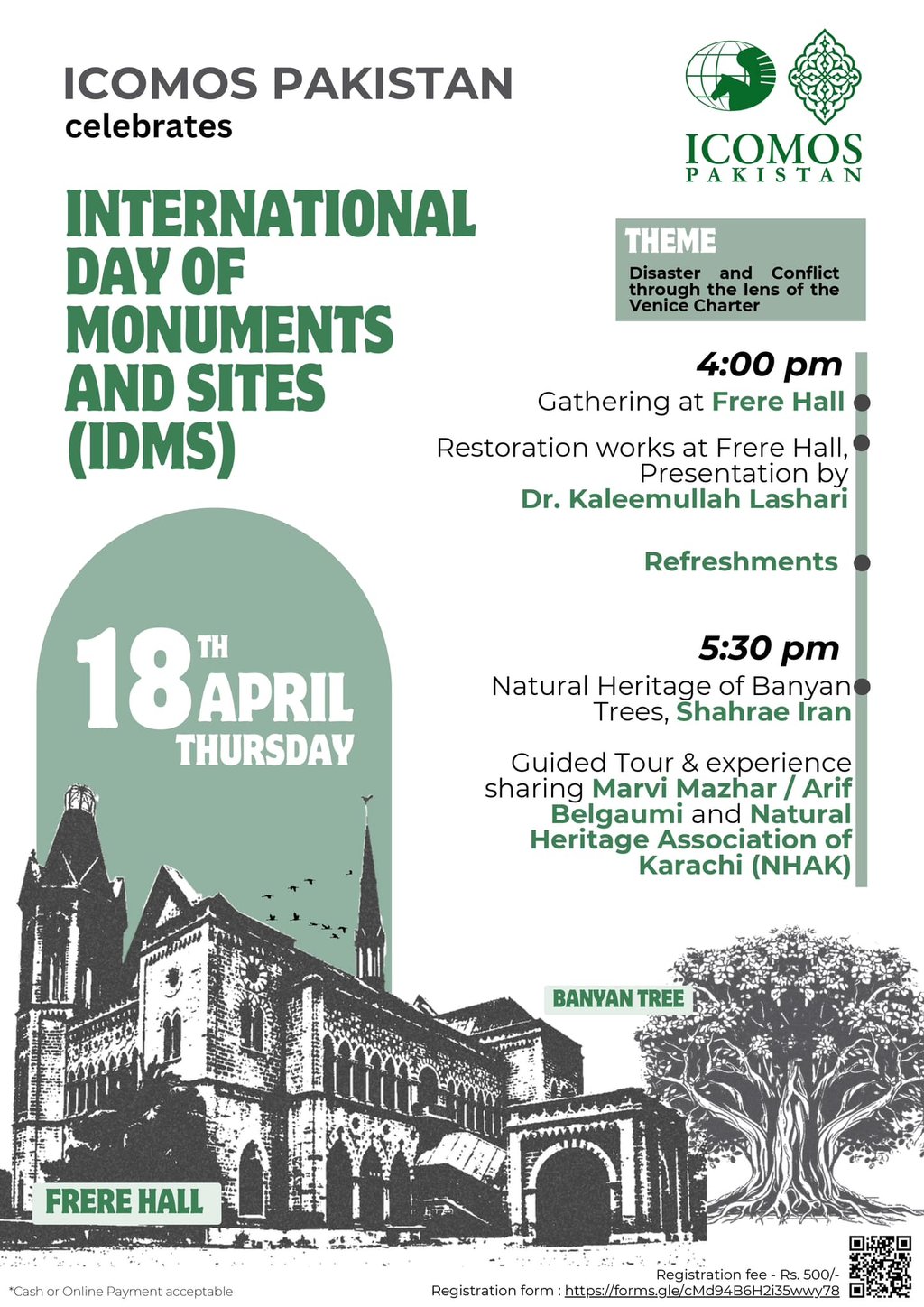

The International Day of Monuments and Sites, also referred to as World Heritage Day, is celebrated globally, promoted by ICOMOS - International Council of Monuments and Sites with the aim to highlight the cultural significance of historic material and intangible heritage, and the need for its protection and conservation. Every year on 18th April, professionals, academia, practitioners and students come together in different parts of the world for this celebration through different activities and exchanges including visits to heritage sites, conferences, roundtables and newspaper articles.
This year, the theme for the day was, 'Disasters and Conflicts through the lens of the Venice Charter', in lieu of celebrating the 60th anniversary of the Venice Charter this year.
The ICOMOS Pakistan organized a visit to two heritage sites for the day within the city area of Karachi. The event was made public on social media platforms and invitations circulated among the members, institutions, academia, professionals and students . The two heritage sites included
A site of cultural heritage, the Frere Hall, a significant colonial heritage, standing proud in a central city location, and
A site of natural heritage, recently declared protected by the Karachi Municipal Corporation (KMC), a locus of very old Banyan trees in Clift on.
Conservation experts who have been involved with these sites were approached to talk about the process of protection for the heritage sites to share their experiences, issues and challenges faced with a wider, concerned audience.
1. Frere Hall
Frere Hall is a colonial landmark heritage, a Venetian-Gothic style building, originally constructed in 1865, designed by Henry Clair Wil kins. The building's construction was largely funded by the Karachi Municipality and it was built to function as a Town Hall. It was named after Sir Henry Bartle Edward Frere, British administrator and a promotor of economic development in Sindh as well as making Sindhi language an administration language. He passed away in 1884 at which point, the decision for naming the building after him was made.
The building sits surrounded by gardens on all four sides, offering it easy open access from two sides, parking and drop off at one end, with limited fencing and gateways, making the gardens a perfect setting for central meetup place in the city.
The hall's library houses more than 70,000 books and includes rare manuscripts on the ground floor. In the 1980s, well renowned Pakistani artist Sadequain took on the task of painting the hall's ceilings, creating a masterpiece after whom the interior of the hall was named Sadequain Gallery . He also painted murals that were left incomplete due to his death in 1987.
The event at Frere Hall started off at about 1630. The event and the theme were shortly explained by Zahida Quadri, Vice President ICOMOS Pakistan. The Venice Charter highlights the need for maintaining authenticity, integrity of cultural heritage through processes of restoration and preservation, maintaining the spirit of the place. Dr. Kaleemullah Lashari, Conservationist and Founder of SEAS, Sindh Exploration and Adventure Society, shared the ongoing restoration works at the Frere Hall. He identified the issues documented within the premises and how the physical restoration was done. The challenges faced by the building given its current use, and various incidents in the previous decades were highlighted by Dr. Lashari along with its significant building features and the issues faced by these. The building is constructed of the local yellow sandstone and has wooden floors in the interior. He also mentioned that there had been statues in the gardens of important British administrators, that needed repair and restoration but they disappeared in particular incidents of insecurity in the area.
Given the significance of the artist, Sadequain to Pakistani art, the gallery has been restored to the function given to it in the 1980s. Before this, Frere Hall had been considered to be developed as a theatre and later was the National Museum between 1951 and 1969 . The question why the building has never been considered to become a Public Municipal facility like a Town Hall, may still be asked, given that the spirit of maintaining the authenticity of heritage building is about maintaining the building's original function. Dr. Lashari remarked that the function would lead to major wear and tear faced by the old building property due to the public visits.
Ms. Fariha Amjad Ubaid spoke of the opportunity that the Frere Hall could offer to students of history and construction if educational materials were linked with the spaces.
The session was moderated by Dr. Masooma Shakir, Faculty at DAP-NED and Treasurer ICOMOS Pakistan, after which there were refreshments and group photo at the building entrance. The group then left for the second site.
2: Banyan Trees around & within the Salman Farsi Park, Clifton
In a couple of coasters arranged by the event organizers, the group reached the site, a few minutes away. Outside the Park, on the sidewalk, the team of NHAK, who worked for the protection of the Banyan Trees greeted all . This included, Architect and Heritage Advocate, Marvi Mazhar, Architect Arif Belgaumi, and Architect Mariam Ift ikhar. The group calls themselves, Natural Heritage Association Karachi . We all gathered under the magnificently tall and old Banyan trees as they explained to us the teamwork, the team, and the process of documentation of the Banyan Trees. About 64 Banyan trees create a locus around the area on Shahrae Iran and Hatim Alvi Road. We were joined in the discussion by the former District Commissioner South, Mr. Irshad Sodhar, who the team acknowledged and appreciated for playing a major role in getting the natural heritage declared as protected .
The team further coordinated with the KMC for the physical upliftment of the pavement, sidelining the pits of the Banyan trees, and getting sponsors for installing concrete and white terrazzo benches for public use under the shade of the trees. The names of the bench sponsors were added in a metal plate, which were soon missing. The benches were designed and installed by Architect Arif Belgaumi as ortho shaped, heavy concrete benches to offer convenient sitting, discouraging theft.
The audience enormously appreciated the efforts of the association in getting the heritage protected and supporting it with various other alignments such as the paving, benches as well as training offered to the KMC's gardeners and tree maintainers for 'pruning' the trees by Mr. Toufiq Pasha, an environmentalist and farmer. This is another issue that was pointed out by the group, that KMC gardeners and caretakers of landscape do not know what pruning is and trees get butchered in the process for the wood's commercial value. Among the major challenges faced are the recent incidents of chopping of a Banyan tree . An FIR was lodged against the incident and culprit received imprisonment for 3 months, reported Ms. Marvi. Such an incident has been reported before this as well. Professionals from the audience questioned how these incidents can lead to the making of a new law that offer protection and how the lodging of the FIR could lead to a certification for continued protection of the Banyan trees .
The group walked down the two lanes and appreciated the natural heritage as they discussed the issues and took pictures. It was discussed how the process could be extended to document and protect other old, precious trees of Karachi, including the Banyan as well as others like Neem trees. In the upcoming challenges caused by climate change, there is a major need for similar endeavours, for the interested professionals and students of allied disciplines to take better ownership of the city.
